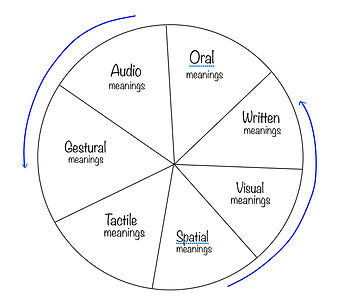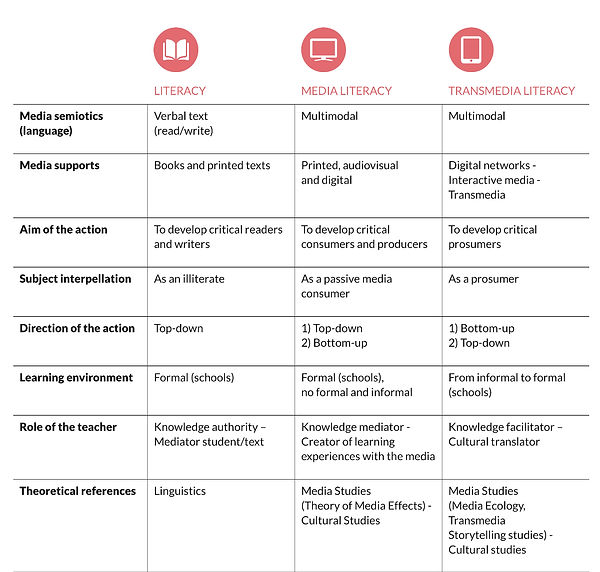
Why Multiliteracies?
Evolving language education:
The New London Group coined the term "multiliteracy" in 1996 in response to the growing significance of multilingual and multimodal literacies in the evolving language education landscape (Cope & Kalantzis, 2009). It is insufficient for the students to only develop the traditional skills of reading and writing if they were to keep up with the multimodal communicative landscape.
To reflect this changes, the English Language Syllabus has expanded to include viewing and representing as language skills that the students should learn in the course of their formal education (Lim, 2018).
Multiliteracy pedagogy:
Learning By Design Framework
(Lim, 2018; adapted from Cope & Kalantzis, 2015)

This lesson package is designed under the principles of the Learning by Design Framework (Lim, 2018). This framework takes inspiration from the Systemic Functional Linguistics Approach (Genre Approach by Halliday) which looks at language for meaning-making. The 4 dimensions of Situated Practice, Overt Instruction, Critical Framing and Transformed Practice are the four major dimensions of multiliteracies pedagogy (Cope & Kalantzis, 2009).

In addition is the Curriculum Cycle (Humphrey & Feez, 2016) which is a text-based teaching-learning cycle that details how teachers teach the different genres of text.
Multimodality

Mulitmodal literacies is interested in how the written, oral, visual, audio, gestural, tactile and spatial modes of meaning work together to make meaning. Multimodal texts are texts that effectively integrate multiple semiotic modes to create meaning and coherence (van Leeuwen, 2017).
For the students, it is the understanding that even in traditional media, no mode is truly separate. For example, a written text involves the written meanings and the spatial meanings such as in paragraphing.
So while the modes are not truly separable, the students need to recognise that there is transposition that can be made and that as prosumers of the new media, we should not undervalue the synthesia of these modes .
(van Leeuwen, 2017)
Transmedia Storytelling

One recognises that the ways students learn has changed and will continue to change with the evolution of digital technology. Multimodal literacies includes transmedia literacies. Transmedia literacy begins more organically, with the students taking on the role as critical prosumers. The role of the teacher is transformed into that of a cultural translator, whereby the teacher helps negotiate the cultural gaps that the students may have in viewing the transmedia stories. (Scolari, 2018).
According to Jenkins (2007), transmedia literacy is the process where integral elements of a fiction get dispersed systematically across multiple delivery channels for the purpose of creating a unified and coordinated entertainment experience. Transmedia storytelling thus presents the same narrative in different media forms (Djonov, Tseng & Lim, 2020). One key idea that stands out for the learner is that each transmedia story presents more interaction with the larger narrative, which gives them a richer understanding of the story world.
(Scolari, 2018)